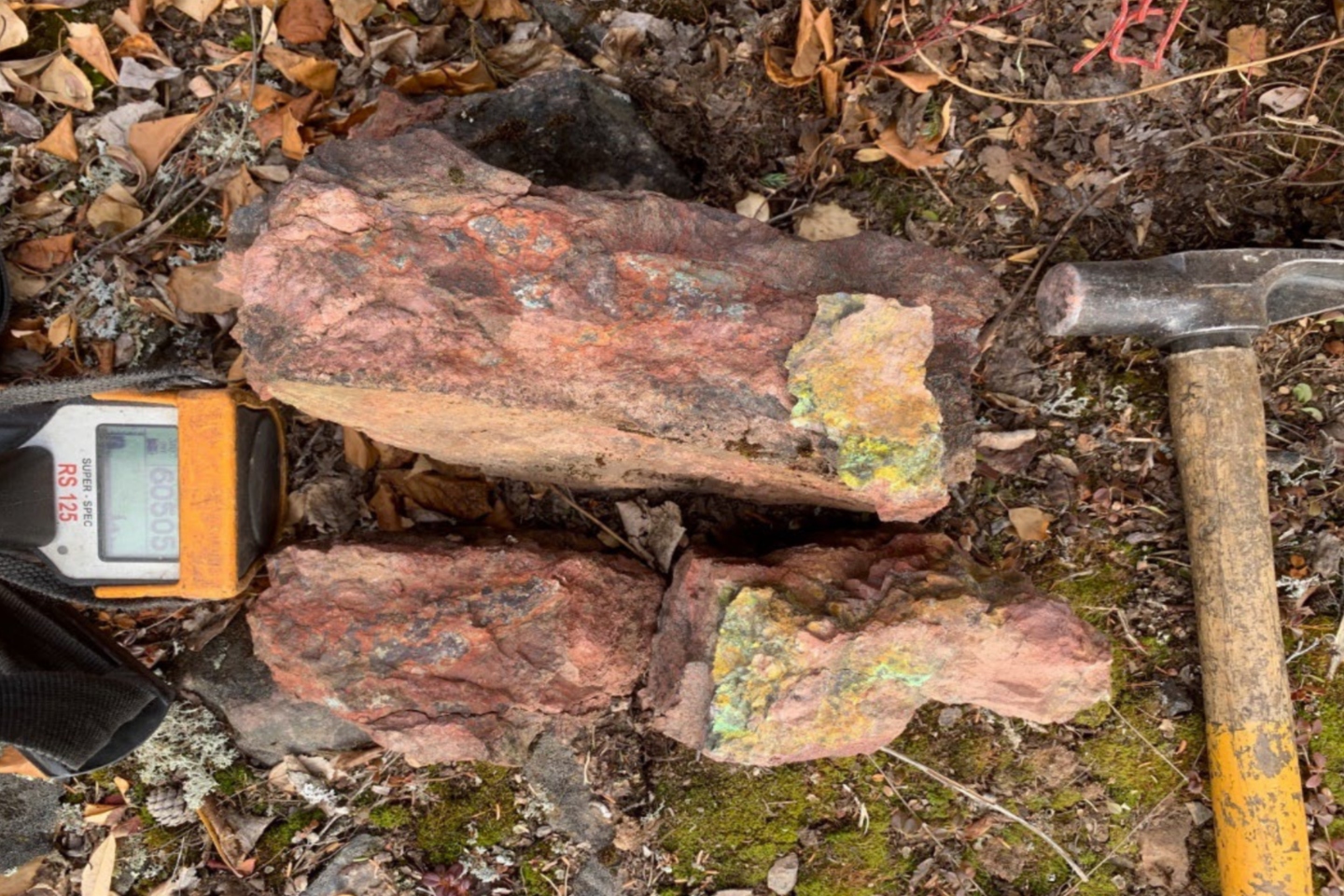Valor Resources has scooped up a suite of high-grade uranium rock chips that have extended the surface mineralisation of a key drill target to a strike length of around 500m at its Surprise Creek project in Canada. The program yielded six samples grading over 1 per cent uranium oxide with anomalous copper and was headlined by a specimen running 7.98 per cent.

Valor Resources has scooped up a suite of high-grade uranium rock chips that have extended the surface mineralisation of a key drill target to a strike length of around 500m at its Surprise Creek project in Canada.
The program yielded six samples grading over 1 per cent uranium oxide with anomalous copper and was headlined by a specimen running 7.98 per cent uranium oxide.
Other notable results include 6.83 per cent and 3.35 per cent uranium oxide.
The results follow an October field program that saw the explorer amass a range of rock chip samples from five uranium targets at its Surprise Creek project. The company says the review of the targets returned scintillometer readings of up to 65,535 counts per second and also lit up an array of auxiliary zones with results of more than 10,000 cps.
50 rock chip samples in total were taken from various parts of the site in October, including 31 from the Surprise Creek Fault region. The work was a sequel to a July campaign that delivered a number of solid assays including 6.13 per cent, 3.96 per cent and 1.83 per cent uranium oxide.
Valor is now drawing up plans to complete a round of detailed airborne radiometrics and magnetic surveys across the entire Surprise Creek project area to vector in on additional targets ahead of a new year drilling program.
According to Valor, Fay-Ace and Gunnar, two of the most significant Beaverlodge uranium district deposits in the Athabasca Basin, which are situated about 25 km to the south-east and 30 km to the south of Surprise Creek, respectively, have a geology that is strikingly similar to the prospect.
The Fay-Ace deposit historically produced 42 million pounds of uranium oxide, compared to 15 million pounds from the Gunnar site.
Valor Resources Executive Chairman, George Bauk said:“These results confirm the extent of significant surface uranium mineralisation at Surprise Creek Fault and provide further confidence in the drill target. The known deposits in this part of the Beaverlodge district produced about 57 million pounds of uranium historically, highlighting the potential of this area to yield very significant uranium deposits.”
Legacy operations at Surprise Creek delivered several notable intersections, including 0.9m at 7.5 per cent uranium oxide, inside of the larger 2.1m intercept going 4.37 per cent from 57m. The historic results were produced in the late 1960s and since then, the area has seen little modern uranium exploration.
Valor’s Surprise Creek project is located to the north of the renowned Athabasca basin in Canada. The Athabasca Basin has historically provided about 20 per cent of the world's uranium supply and is home to some of the most productive energy resources on the planet.
Given the demand for uranium has been tipped to jump to about 30 per cent by 2030 Valor could be setting itself up to help satisfy an energy hungry market.
Is your ASX-listed company doing something interesting? Contact: matt.birney@businessnews.com.au
















